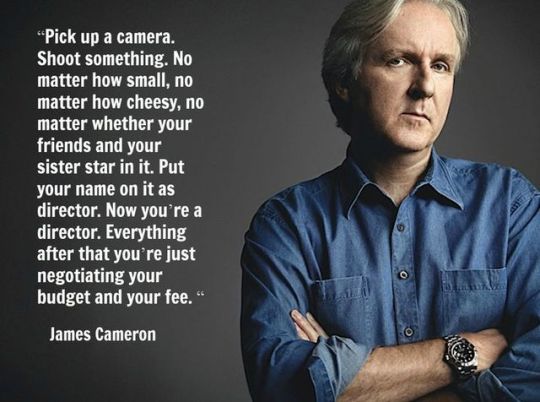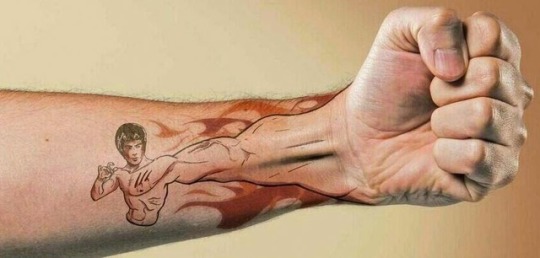My name is Nolan Cavan and I'm currently attending Full Sail University to complete my Masters degree in film. If you want to see my work you can visit https://www.youtube.com/channel/UCzlUtadv0vxJ6RGr6ZVfvyw .
Don't wanna be here? Send us removal request.
Text
Business of Film Mastery Journal
My goal entering in to my final course Business of Film was to prepare myself for my deployment into finding myself a job in the film industry. As such this class has already been helpful in touching up my resume from the bachelor’s program as well as assisting me in creating from scratch my own professional bio. I am currently in the process of editing an intro video to either replace or supplement my demo reel that will feature prominently in my website that I will have created by the end of next week.
I also learned several aspects of the overarching filmmaking business such as theatrical distribution profits which houses a large number of factors such as exhibitor and distributor splits and distributor rental fees. Television profits are based mostly on commercial revenue dependent on Neilson ratings but can be supplemented after the show has ended through syndication. Netflix on the other hand only pays upfront to run the show or movie a set number of years as its profits are gained through subscriptions. I did learn however that other streaming services do allow other means of income such as Amazon that pays distributors of its prime content on a cent per hour viewed basis on top of an up-front free.
Throughout this year my concern was to improve my skills as a director of photography, and while I never officially carried that tittle in a large-scale thesis production I did make great strides toward it. While I was completing my bachelors program I spent all of my major productions as a member of the camera team. While that is a great starting off point I still needed to supplement my knowledge with an understanding of the grip and electrical side of the D.P.’s job. I worked my way up from griping two thesis films to becoming the best boy electric on two others. I finished my year as the gaffer for two thesis films. I feel now that I not only have a clear understanding of all departments the D.P. has to oversee but the leadership skills learned from my time as a gaffer to perform duties as the D.P. effectively.
0 notes
Text
Post Production Mastery Journal
I originally learned how to edit in Avid in the bachelors’ program. Doing so an entirely different workflow was presented to me as opposed to the one in this course. That workflow centered around completing every aspect of post-production in Avid Media Composer including sound and color.
One of the first ways our classes differed was actually being taught how to ingest media into Avid. In the bachelors’ program that work was done for us so we were never taught to link video and import audio. Also, previous classes in the master’s program only gloss over this step with Lynda videos, although these classes usually focus on filmmaking as a whole as opposed to just post. This slower jumping off point also allowed me to delve deeper into how a films workflow is handled, as opposed to just jumping straight into editing.
It was also great to learn that outside of mix tracks all dialogue tracks recorded on set should be sent to audio post to give them the widest range of options. In the bachelors’ program since all of our audio was tweaked in Avid we would simply delete tracks we know we weren’t going to use. It’s good to know what the proper way to organize dialogue tracks is for future use. It is odd to me though that mix tracks are ultimately deleted as creating a strong mix track was a huge concern when I learned about sound in the bachelors’ program.
It was also great to get introduced to DaVinci Resolve. Having an assignment take place in the software so I could learn the ins and outs of said software would be nicer though. Either way it was great to at least scratch the surface of what DaVinci can do for me such as how affordable it is to create my own DCP of a future independent film I might create through add-ons. I am honestly considering learning all about DaVinci and making it my primary editing, coloring, and sound software for all my future projects.
0 notes
Text
Thesis Month 2 Production Journal
This month my original goal was to learn via on hand experience what goes in to being an effective gaffer. I made myself available to assist my D.P. with lighting tests the week before production like how Robert Muller had access to time with his gaffer during his masterclass session. Thankfully unlike in Robert Muller’s case we didn’t have to figure out everything the day of production, but due to constant changes in locations we were still stuck with a tight schedule. Thankfully the tests we ran the week prior thankfully did give us a baseline plot to work from while allowing room for small tweaks to be made during our production days.
This was also the first time I was placed in a leadership position on set. I did work on two previous sets as best boy electric which would be a leadership position on a professional set, but is relegated to simply running power effectively on our shoots. On our shoot days, I made it a point to keep all members under myself informed by showing them the lighting plots ahead of time. The same happened with relaying info to my Key Grip so he could guide our grips just effectively as myself.
After the first day’s initial rush of getting any light we might need built and placed on standby, I had a bad habit of trying to complete each task myself instead of tasking my grips with doing it as necessary. After receiving this advice at the end of the first day, I did tweak the way I worked to incorporate my grips into the day’s work instead of just the beginning and end of the day. As such the following days went along much smoother than the first. I still made it a point to be available to do work myself, but only if I knew all other tasks were being taken care of by my team.
Reference:
Robby Müller Cinematography Masterclass. (2014, December 09). Retrieved October 22, 2017, from https://www.youtube.com/watch?v=DqaL9so8CHQ
0 notes
Text
Day 39 Short Film Review
Link: https://www.shortoftheweek.com/2016/07/21/day-39/
Day 39 is a thirteen-minute short that would have a logline something like “A young solder is ordered to assist his field medic in saving the life of a pregnant woman and her baby during his combat deployment in Afghanistan”. The film technically has two themes, the first being the contrast of how easy it is both in training and in practice to adapt a mindset to take life, as opposed to a mindset to help others. The other theme comes from the film’s title that the protagonist is only in the second month of his at least eight-month deployment (that’s from a Marines perspective. I’ve been told Army tours last even longer.), and despite the major impact this event had on him the mission must continue. The film’s genre while technically found in the action section of shortoftheweek.com would be more akin to a drama. The tone of the film is incredibly tense both outside the house as the solders continue to scan for threats as well as inside while the medic and protagonist are operating.
The inciting incident occurs when the protagonist’s sergeant orders him to assist the medic inside. Plot point one involves the protagonist mistaking a wounded farmer as a terrorist and having the medic quickly explain the situation. Plot point two involves the outside group receiving a call that the helicopter can’t come in to pick up the wounded farmer due to terrorist activity. The midpoint involves two other civilian women arguing in Arabic with the grandmother and pregnant woman about the fact that if the Taliban find out about U.S. help the entire family will be murdered. This conversation ends with the farmer telling them that this is according to his wishes regardless. This plot point puts everyone in the house in alignment to work toward saving the wife and child. The climax occurs with the baby being safely birthed, but hits with a resolution that the farmer died from his wounds. The denouncement has the protagonist and his team marching toward their next objective leaving the civilian family behind.
The interiors of this short were filmed in New York on the Columbia soundstage. The exteriors were shot in New Mexico. The costumes were actual military uniforms for solders and grungy farmers ware for all Arabic males, noting the fact that the Taliban don’t have a uniform on purpose. The only exception to this rule is the U.S. friendly Arabic translator who wears his military uniform instead. All female characters wear more colorful but still grungy dresses and hijabs, one even wears a full-face covering. The props for this film are the rifles for every solder, the water bottles thrown in the beginning, the blanket used to wrap the newborn in, and various tools utilized from the medic’s pouch. The interior set dressing utilized distressed walls, curtains to separate rooms, and little else besides small trinkets like the bowls the family use in the windows, and sandbags covering other windows. This helps establish the level of poverty of this household. Make-up probably wasn’t used in this film to help capture reality better. The protagonist and medic both have military regulation haircuts, although the medic’s hair is fuller grown to showcase his experience. All Arabic males have beards while all U.S. troops are clean shaven.
The focal length for most shots sit around 35mm except for shots involving what the solders are aiming at. Those shots sit more at 80mm or higher. Only one shot involves a shallow depth of field where the protagonist is about to fire on a potentially hostile woman. The interior shots mostly utilize mid-level Depth of field allowing the viewer to still see most of the shack but keep focus on the characters. The exteriors utilize mostly deep depth of field to emphasize the solders constant need to constantly scan the horizon for threats. The exterior shots are mostly naturally lit. The interiors have blown out windows to both compensate for the fact that they were filmed at a different location as well as act as natural key lights. The rest of the room was probably lit with a soft light to meet exposure. The camera’s position is mostly at eye level with the main character shown unless it a point of view shot. Because of the story being told most characters are however closer to the ground most of the time either because they are behind cover, helping the pregnant woman, or simply laying down because they have been shot. This naturally causes most shots to be lower than normal. This film plays it safe in terms of composition outside of most shots being unnaturally low. The first, last, and third to last shots are handheld dolly out and in mimics. Every other shot is a simple sticks shot with the occasional pan and tilt.
The music for this film is a simple drum beat used to build tension, except for the beginning and ending that use the natural sounds of gunfire and the grandmothers humming as basses for the music. Some other natural sounds added are the background wind and a goat’s moan. The dialogue is fast and crude due to the situation and the natural way most solders speak.
The editing is by the numbers as well involving no unusual transitions, and traditional shot reverse shot continuity. Occasionally the film cuts to outside the shack to show what the rest of the squad is dealing with.
Some choices Our team can utilize like how this film was shot is having the exterior and interior shots be filmed at different locations. This will also solve the practical issue of us not being able to film at an actual boutique. This film also played several aspects of its production by the numbers which is perfectly fine. As the gaffer, I should look for ways to simplify the lighting and grip plots without losing our films artistic integrity.
0 notes
Text
Film Law Mastery Journal
My largest goal for this month was to become better at ascertaining how copyrightable items and trademarks can be implemented in future projects. I learned that if trademarks are not the focus of the scene, or portrayed in a negative light they are ok to be shown in the film. The same with copyrightable artwork. A cautious approach is still recommended as it is better to not get sued at all, as opposed to being sued and wining. Also, audio elements such as music or sound effects are not allowed to be placed in a film without permission. Documentary films however may be protected if the music is recorded on site. Overall it is good to know that I am protected if a logo manages to slip into any future project I create.
I also learned how to protect my own copyrightable work. I learned that I can register any film or script I create at copyright.gov for only 35 dollars. I also learned the basics of drafting a contract if I decide to team up with someone else to create a script, or if I decide to produce a film.
One key point I learned is when fair use of a copyright is proper. In reading the Walt Disney vs. Air Pirates court record I learned that parody is simply not an excuse to blatantly copy the look of Mickey Mouse or other cartoon characters. What you are parodying specifically should also be considered. The Air Pirates lost the case because their comics weren’t parodying the look if the characters but the way they act. One large determining point was that such a parody could have been completed without a blatant copy of the character. One modern example that you could argue is fair use is when Mickey Mouse was loosely drawn for two episodes of South Park. In both of those episodes the aspect being parodied was Disney’s business practices thus requiring an actual albeit badly drawn copy of Mickey Mouse to drive home South Parks point.
0 notes
Text
Visual Story Telling Mastery Journal
For this month, my largest goal was to put in reps as a cinematographer. I immediately signed up with another teammate whom I knew wanted to practice his directing skills to create our final project. With Hector as a teammate I was free to focus completely on lighting and camerawork when we began shooting. I also utilized my emotional video as another attempt to also practice my lighting skills, along with being involved in several of my classmate’s productions.
The lectures while mostly retreading ground learned in the bachelors’ program were also a welcome refresher. The fundamentals of lightning lecture for example, was great to go through a second time. Relearning alternatives to the Rembrandt such as side and bottom lighting, and what emotions these setups evoke was quite enjoyable. The labs also served as a welcome refresher to grip gear. In the bachelors’ program, I spent most of my time in camera team, so being able to build back up my knowledge of the grip and electric side of cinematography was quite welcome.
Relearning the light meter, especially how the spot meter works mathematically in tandem with the incident meter was extremely helpful. This lecture instilled in me the knowledge of how to mold shadows and swaths of light based on what I have set to eighteen percent gray. Because of this I now have a much deeper understanding of how to create dynamic images in the same style as Ansel Adams.
Balance of contrast is another technique that was a welcome refresher. While I was taught this technique in the bachelors’ program, I was primarily concerned with wrapping my head around the ins and outs of the camera department. I grasped three-point lighting, and cross key lighting quite well, but forgot techniques on how to effectively light the background. This technique is another welcome tool in my cinematographers’ toolbox, along with previously mentioned lighting techniques, and foreground elements.
Safety was another issue brought up heavily during our lectures and labs, especially dealing with electricity. Regardless of whether I know the information or not, the importance of constantly reminding ourselves and others about how to safely work on a film set is always crucial. It is good to know that my fellow students now know how to keep both themselves and others on set safe.
Motivating light is another technique brought up in this class. It helps to consider what would be lighting the characters in your scene naturally to not only utilize that position as the key light but also to give the audience a reasonable explanation as to where the light is coming from. This technique is especially important in period pieces that take place before the lightbulb was invented.
The second biggest issue discussed just below safety, is that ultimately the story should dictate all the lighting and framing. Sometimes a scene simply needs to be unnaturally lit and framed due to such things as say a ghostly presence, or a dream sequence. All the lighting and framing techniques mentioned above do work perfectly for the majority of film scenes, but there are rare occasions when those rules can be broken for an even stronger image.
0 notes
Text
Experimental Filmmaking Mastery Journal
During this month, my goal was to research several experimental techniques to enhance my ability to produce compelling films. That goal was clearly attained as we researched several experimental styles such as slow and fast films, structuralist films, and even virtual reality films. I got to dive deep into the symbolism of an experimental film of my choosing, and present those findings to my class. Finally, after being exposed to all these films I now have several new ideas to add to my film attempts whether my films are heavily experimental or not.
Surprisingly during this class I also received several lectures, labs, and readings on more traditional filmmaking techniques like three-point lighting and continuity editing. We as a class even participated in a three-point lighting exercise. While these lectures were mostly a review of information I had previously learned, they were great exercises to gain further experience in my field. These lectures also reinforced the notion that a filmmaker must know traditional filmmaking rules before breaking them, and if a filmmaker breaks these rules they must have an artistic reason behind them.
One large goal that I set out to accomplish this month was to shoot my own short film. While I encountered numerous obstacles such as injuring my knee, I did manage to capture all the footage I need, and only need to finalize the films sound design before its complete. Another obstacle was that during filming I was a one-man crew. I was also filming at a friend’s home with limited supplies. Because of these obstacles, I needed to be resourceful in terms of lighting and time management. I used mostly existing lighting with only slight tweaks here and there. I also used the in-camera meters to assist in exposure and focus pulling. Because of these choices I was able to capture all the footage I need in the time frame I needed to.
0 notes
Text
Directing Reflection
My main goal for this month was to simply put in the reps of being a director. In the bachelors’ program, I only directed two shorts, the first of which involved a speed up pre-pro cycle of only a week and a crew that was hard to control, the second being a documentary. As my experiences were so hectic I chose throughout the rest of the bachelors’ program to pursue more technical positions such as camera team, or editor.
This month outside of simple camera framing, all tech issues like lighting and sound were to be ignored. Therefore, I got three opportunities to practice directing with only framing and performance being the deciding factors of my grade.
I found while on set that “as if” scenarios came almost second hand, especially if I had a good personal relationship with the actor. I now know that I should utilize rehearsals as not just a means to revise the script, but also to get to know the actor personally. Doing so will allow me more options when it comes to performances in front of the camera.
I also learned the importance of honesty in performances, or the importance of not over rehearsing. One of the great advantages film has over plays is that you get multiple takes, and only a few lines need to be read at a single time. Also, dialogue can be improvised by the actor on the spot giving a slightly different but more honest interpretation of the script. At the end of the day its more important that the emotion of the scene be played honestly as opposed to the lines of the scene, or in other words “don’t feel afraid to do it wrong”.
One of the things I need to continue practicing is my control of action verbs. “As if” scenarios are a great tool but don’t work if I don’t know the actor as a person. Currently my directing style requires at least a relationship beyond acquaintance to be effective, and I may simply not have the time to build relationships with actors in future projects.
Finally, one huge lesson I learned is to take my time with the performance. It’s not my job to worry about the shot-list schedule, it’s the DP’s and AD’s. It is ultimately better to get a few takes with perfect performances, than all my scheduled shots but with only mediocre performances.
0 notes
Link
0 notes
Photo
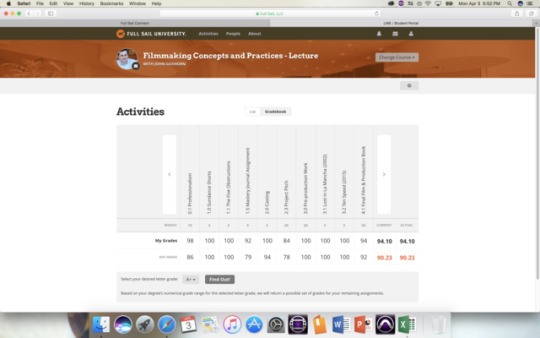
Weekly Inspiration
Got an A in my second class.
0 notes
Photo
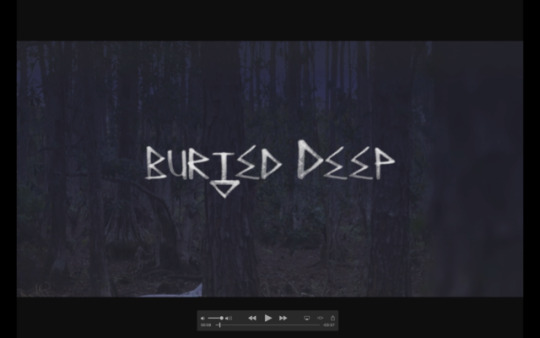
Weekly Inspiration
Our first film project is done.
0 notes
Photo
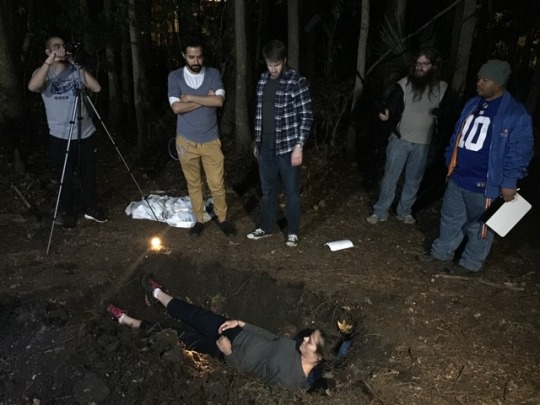
Weekly inspiration
Working with the crew as sound recorder.
0 notes
Text
Mastery Journal Assignment
The film Man (2008) would have a logline along these lines “After reading her sisters instant messages Maggie follows her as she knows her sister is off to meet a young man she has been lying to her about”. The theme of this piece would be about how men manipulate women into having sex with them. The genre of this film would be a drama but it was shot with an ironic comedic tone.
The inciting incident for this film would be when Maggie reads the instant message thread between her sister and Bruce. The plot has Maggie following her sister as she meets Bruce and they head off to an abandoned cabin. When Maggie approaches the cabin, she continues to spy on them until she is caught by her sister but not Bruce. Her sister tells her to wait in one room of the cabin but to remain out of sight. The midpoint occurs when Maggie continues to spy but is caught by Bruce as well. Maggie tries to convince her sister that all that Bruce wants is sex and doesn’t care about her, by making out with Bruce after he flirts with her as well. This of course is happening in front of the sister. The climax occurs when Maggie’s sister shoves Maggie away from Bruce and decides to have sex with Bruce in another room. The climax resolves with Maggie’s sister wanting to stop in the middle of sex but unwilling to tell Bruce. Maggie secretly reaches out to her sister’s hand around a door frame and they hold hands during the event. The denouncement of the climax has Maggie and her sister walking home and Maggie sister waves goodbye to Bruce. Maggie then decides to run ahead of her abandoning her in the woods.
The two locations that were used were Maggie’s house and the abandoned cabin, including the surrounding woodland. As this is a student film from the Columbia film master’s program, Maggie’s house was probably the apartment of one of the crewmembers. The abandoned cabin may be property of someone a crew member knows, or a simple filming permit may have given then access.
�� The costumes consist of contemporary casual wear easily accessible by the costume designers own wardrobe, possibly a male crewmember let her borrow some clothes for Bruce. Most the props were also probably lent out to the production, the only two exceptions are the box of chocolates which was most likely bought, and the mattress which was probably picked up for free via Craigslist. The choice for Bruce to be a manager at a shoe store was probably decided because Columbia College had a prop closet full of shoeboxes. The set dressing was probably a mix of what was at each location and free or cheap items found at yard sales. The hair and makeup consists of mainly traditional beauty techniques with a little red added to make each actor look younger.
Most the shots seem to be between 35 and 50mm, except for a few telephoto shots from Maggie’s perspective. The depth of field throughout the film seems to be mid-range. Some shots outside were assisted by distant trees. The rest of the film primarily uses interior shots that don’t allow for background objects to fall out of focus. The lighting is very soft to make the actresses more beautiful, at about a 2:1 to 4:1 contrast ratio for most the film. The exteriors were also shot a magic hour, and the film also benefited from a color correction giving the film an ironic romantic comedy look. Every shot in the film is filmed handheld making camera pans easy but keeping the image stable not so much. The camera being handheld for each shot is probably why the depth of field is so deep as the film has only one member in the camera team. There is no unique theme to the composition of each shot other than traditional framing methods.
The only song in the film is “Do You Mind My Dream” by LiLiPUT, once again an ironically upbeat song. The sound effects were emphasized greatly to the point of being annoying loud. The dialogue was normal levels except for Maggie’s spying segments where you would hear Bruce and Maggie’s sister at inaudible low levels to emphasize their distance.
The editing was done traditionally for this film. There were no jump cuts, montage’s, or even transitions. The only technical rule break was that the film chose to cut from and to instead of fade in and out to black at the beginning and end of the film.
Some formal choices outlined in Man that can be utilized in my current class project are, attaining costumes, props, and set dressing for free or cheap. Searching for locations should be approached with the same amount of frugality. By keeping the f-stop high and the focal length low I can also be able to maintain an easily flexible depth of field.
Some creative solutions to practical challenges of not having a budget for this month’s project are, cheating certain camera angles if the location is small. Having my friends act for me, as well as potentially use their residences as a location. And finally work multiple positions for my film.
References
Joseph, M. (Director). Daniels, J. (Producer). (2008). Man [Online video]. Retrieved from http://www.imdb.com/title/tt1156321/fullcredits?ref_=tt_cl_sm#cast
0 notes
Photo
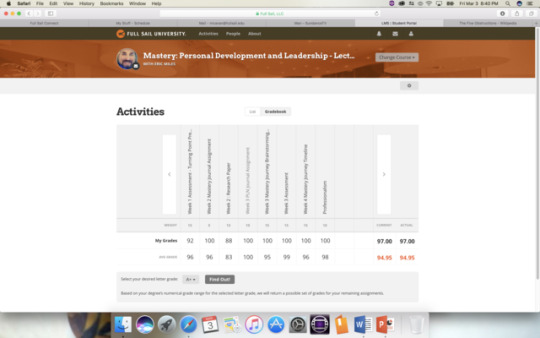
Weekly Inspiration
Got an A+ in my first class.
0 notes
